
© 2010-2021 by Fine Arts of the Southwest, Inc. All rights reserved.
Unauthorized reproduction or use is strictly prohibited by law.
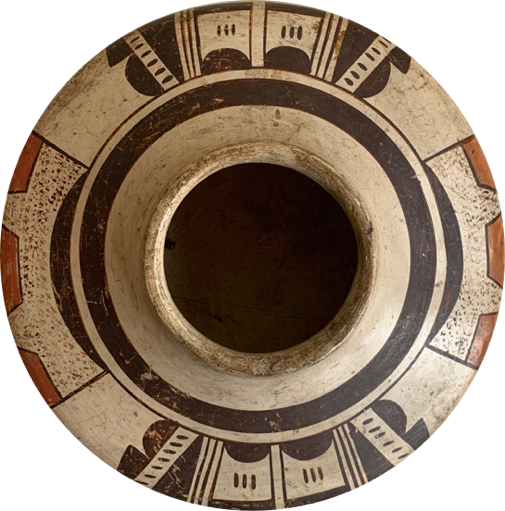
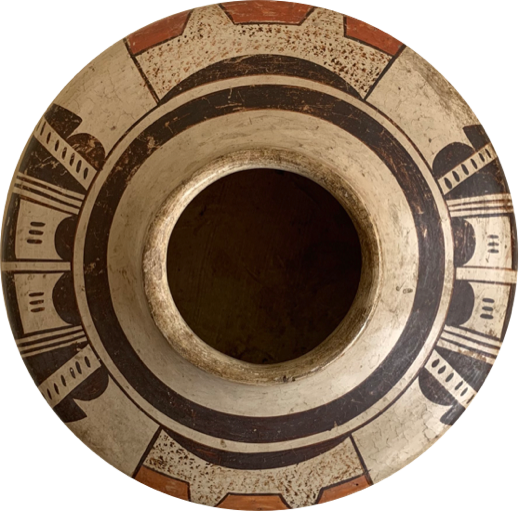
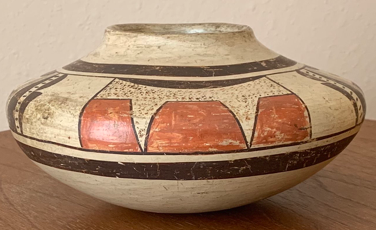
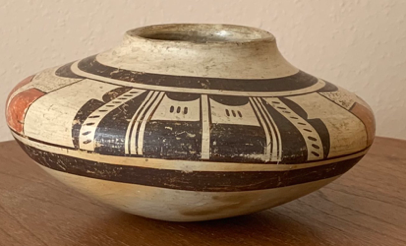
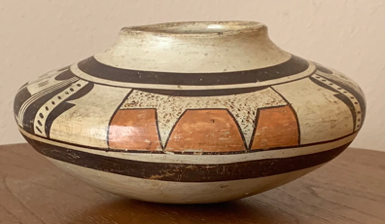
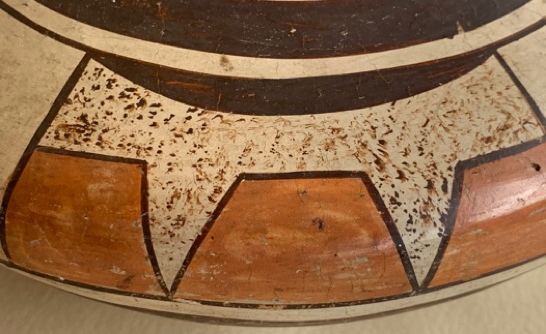
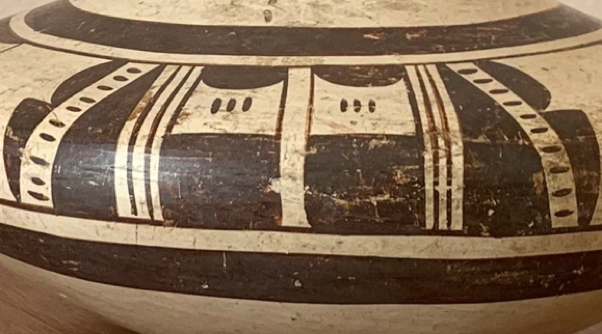
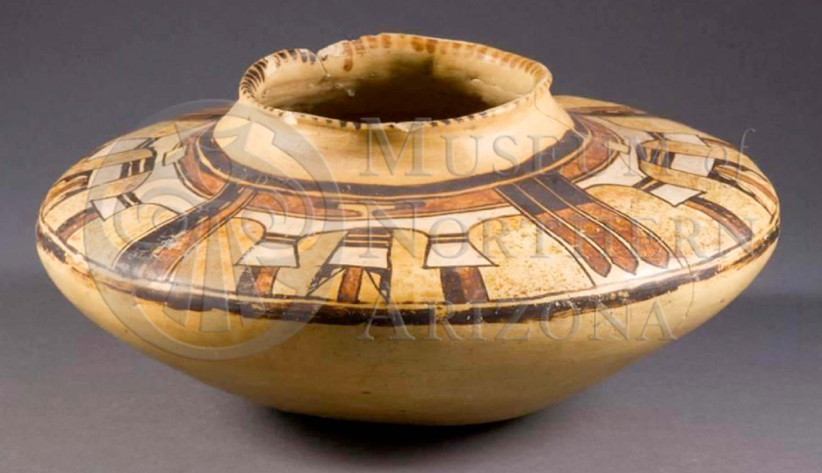
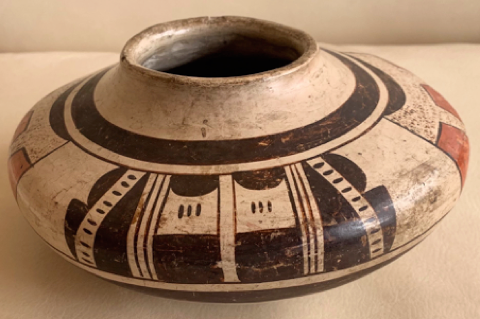
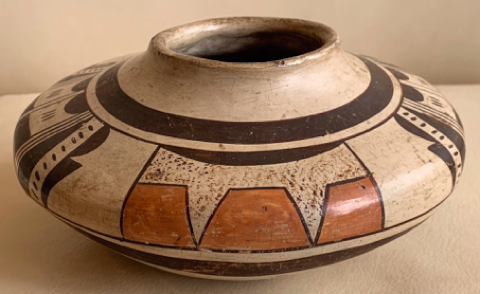
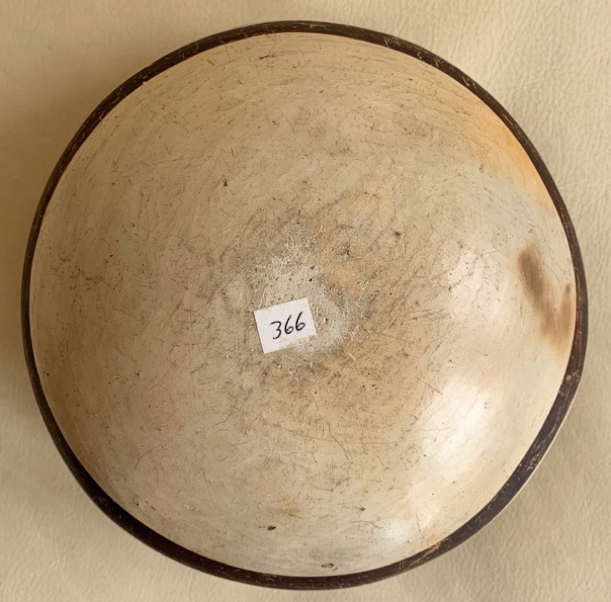
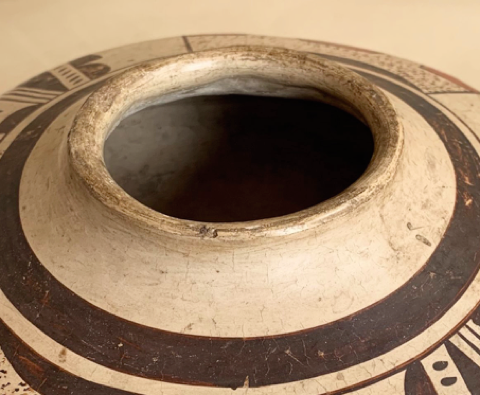

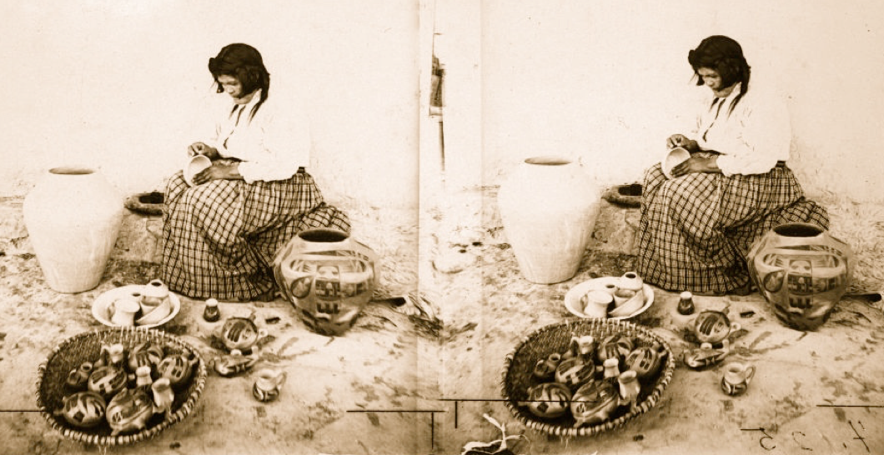
A beautiful Hopi “Sikyatki-Revival” style polychrome
pottery seed jar by Nampeyo of Hano, c.1900-1905
NAMPEYO OF HANO (1859-1942) was physically a tiny woman. She stood under five feet tall, but she is an absolute giant in the history of Native American pottery. Her tremendous pottery pieces, like this wonderful Hopi “Sikyatki-Revival” style seed jar tower head and shoulders above everybody else’s.
This vessel is like a perfect little artistic jewel; compact and completely packed with exceptional beauty and quality. This jar is a “textbook” Nampeyo piece, so to speak, in that it has virtually every single characteristic trait associated with Nampeyo’s work, from its “Sikyatki-Revival” style low-profile, flat jar shape to the exceptional overall quality of the potting, painting, stone polishing and high-temperature coal firing to the numerous specific particulars of the painted design; a symmetrical, four-part layout painted onto a bone-white slip which is composed of two matching pairs of horizontally-opposed stylized feather designs. The areas of stippled paint and the unbroken encircling framing lines are also distinct marks of Nampeyo’s hand as is the sophisticated and prominent use of “negative” space, specifically the four-part negative design which acts as a beautiful visual counterpart to the four-part painted design and which imparts a distinct and lovely sense of “motion” to the jar’s appearance.
The 45-degree tilted angle of the polished interior rim of the jar is also a specific technical indication of Nampeyo. An additional and fascinating creative detail here is her deliberate addition of two horizontally opposed crescent-shaped extensions of the top circular framing line to highlight and accentuate the jar’s wide circular shape. Finally, another mention of the outstanding quality of the stone-polishing is in order, the jar positively “glows” from this and the surface has an extraordinary soft feel and texture in the hand.
The jar measures a nice-sized 7” in diameter and is 3 1/2” in height. It is in excellent original vintage condition, especially when you consider its 110 plus years of age. There are some scrapes, some staining and some minor abrasion paint losses but there are no cracks, no significant chips and there is no evidence at all of any restoration or overpainting under close ultraviolet light examination. The jar is slightly off center and it leans a bit in certain positions as can be seen in the photos. This is a function of it being entirely handmade and of having a rounded bottom and, as such, is not a problem in any way. If one wanted to display it on a circular stand that would easily remove any unevenness or one could also display it vertically on an upright pottery stand. The jar has a small white paper label affixed to the bottom with the handwritten number “366” which is most likely an old collection number.
This vessel is an outstanding example of the accomplished work of an outstanding Native American artist and like its creator this jar might be small in stature, but it is tremendous in its artistic, historic and visual impact.
Price $4,500
“When I first began to paint, I used to go to the ancient village and
pick up pieces of pottery and copy the designs. That is how I learned to paint.
But now I just close my eyes and see designs and I paint them.”
—Nampeyo
Sikyatki polychrome “low-profile” jar with feather motifs, circa 1550-1600 A.D.
Photo source and © Museum of Northern Arizona, Flagstaff, AZ
An early black and white stereoview photograph of Nampeyo, c. 1900-1905